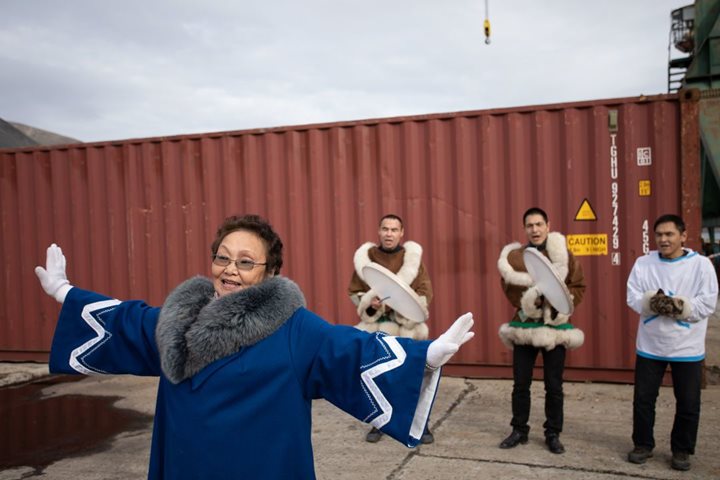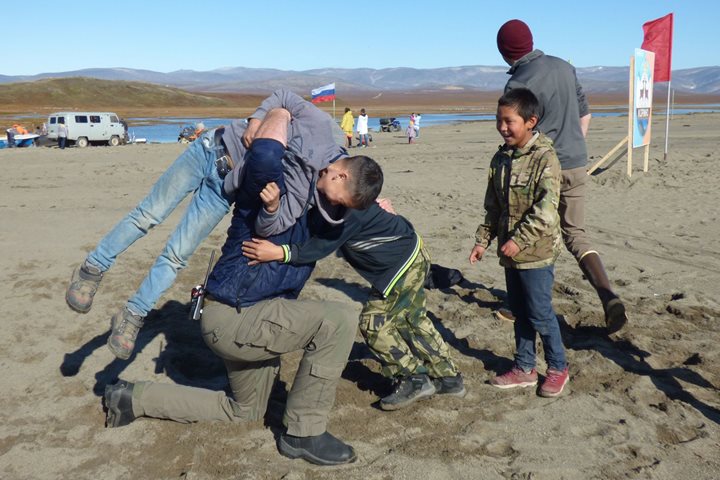Today we are making our way across one of the most famous and least understood bodies of water in the world: the Bering Strait. Thus far, we have had just about the best conditions imaginable, which is particularly pleasant considering the strong winds and rough seas that we experienced yesterday during our embarkation of National Geographic Orion. The wind slackened and the sea followed suit overnight, so this morning we had the pleasure of waking to an unexpected calm.
All around us is a very unusual place, the narrow division between Russia and the United States. It is geopolitically unique and enormously significant to these two nations, yet it is so remote that it is almost forgotten in our day-to-day perceptions. It stands as a border between two superpowers, yet it is bridged by a deep, long-term connection between the people who live on each side. Our own journey across these waters is the beginning of an expedition that will take us into a very different world, politically and ecologically, yet the Arctic of the United States, Canada and Russia is very much one place and has been so for many millions of years.
And beneath us, very close by in these shallow waters, lies still another world: Beringia. Not simply a narrow bridge across which people made their way into the New World during the Ice Age, Beringia is very much a place of its own. It was, and is, a huge region, as big as British Columbia and Alberta put together. It has been home to dinosaurs, woolly mammoths, herds of small horses and the largest species of bear ever. It remains, just waiting for the waters to recede again, as they have many times in the past.
A day at sea always gives us time to contemplate the adventures ahead of us, to prepare our thoughts, our feelings and our cameras for the worlds we are about to experience. It has been a restful day, with introductions to the staff and presentations on photography and the changing climate of the Arctic. We’re all feeling ready to go and we’re getting pretty excited about it all.







